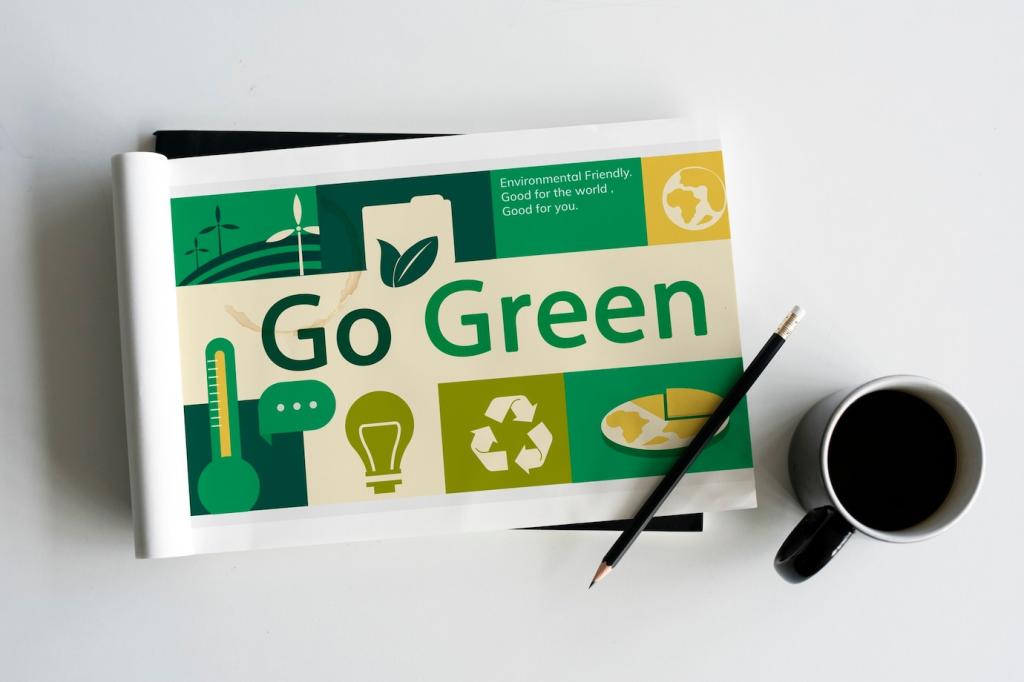Crafting Messages for the Eco-Minded Consumer
Welcome to a space where storytelling meets stewardship. Here, we explore practical, human ways to communicate sustainability so it feels credible, hopeful, and worth acting on. Expect frameworks, field notes, and experiments you can use today—and a community ready to test them with you. Chosen theme: Crafting Messages for the Eco-Minded Consumer.
Know Their Why: Mapping Eco Motivations
Start with the belief your product empowers, not the attribute it boasts. An eco-minded buyer wants to see how their choice reduces harm and aligns with identity. A farmer’s market brand doubled sign-ups after swapping glossy adjectives for clear soil, water, and worker-impact notes. Try it, and invite readers to share which values resonate most.

List the impacts you can substantiate, the uncertainties you’re still studying, and the trade-offs you accept—using simple language and links to methods. A concise impact table often outperforms a polished manifesto. If you publish an environmental product declaration, tell us; we’ll feature exemplary formats to inspire others.
Earned Trust: Communicating Without Greenwash
When packaging cuts plastic but adds weight, say so. Explain why you chose it, what you’re testing next, and when to expect an update. This humility turns skeptics into collaborators. Ask your audience to vote on the next experiment, then report back on results and lessons learned with real numbers.
Earned Trust: Communicating Without Greenwash
Lifecycle Stories That Stick
Trace one product from material origin to end-of-life, with verifiable waypoints. A tee’s journey—rain-fed cotton, low-impact dyehouse, renewable-powered mill, repair-friendly seams, compostable hangtag—becomes memorable when each step includes a customer action. Share one lifecycle step you can document today, and we’ll suggest a narrative hook.

Lifecycle Stories That Stick
Profiles of growers, makers, and repairers humanize impact. A shoemaker’s story about refusing speed over quality sparked a local repair movement and boosted loyalty. Use first names, locations, and a meaningful quote. Invite readers to submit short maker interviews; we’ll publish standout pieces in a community spotlight.



Visual and Verbal Language for Sustainability
Skip vague leaves and abstract waves. Use diagrams, material callouts, and before/after visuals that explain real change. Write alt text that includes impact details for accessibility. Test comprehension with five users. Post a screenshot of your product page, and we’ll offer community-powered microcopy improvements.
Visual and Verbal Language for Sustainability
Data needs anchors: “saves 2 liters” becomes “enough to brew three cups of coffee.” Use ranges when precise numbers vary, with a note on methodology. Avoid totalizing claims like “planet-saving.” Comment with a metric you track and we’ll suggest a clearer, more relatable framing.


Measure, Learn, and Share Back
Define a North Star and Benchmarks
Pick a single guiding outcome—avoided waste per order, verified repair rate, or refill adoption—and align copy to it. Set quarterly targets and publish them. Readers, tell us your North Star in the comments and we’ll propose message variants tuned to that outcome.
Close the Feedback Loop with Community
Invite stories, critiques, and ideas, then show what changed. Host monthly roundups of customer suggestions and your responses. This transparency compounds trust and sparks better ideas. Tag us in your behind-the-scenes posts, and subscribe for templates to systematize your feedback rituals.
Experimentation with Ethics
Run experiments that respect autonomy: clear opt-outs, no dark patterns, and genuine consent. Share wins and misfires equally. Keep a public changelog of message iterations and outcomes. If you maintain an ethics checklist, link it in your bio and we’ll feature thoughtfully crafted examples in future posts.
